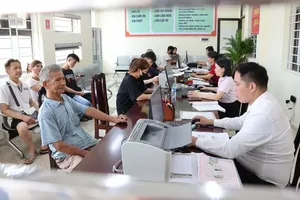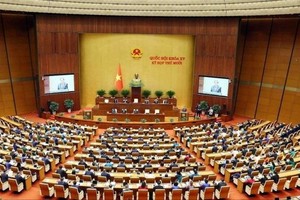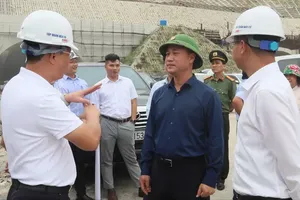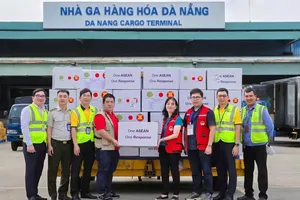Using their strategic geographical location, fertile soil, robust infrastructure, and advanced production practices, Mekong Delta localities have been diligently crafting support plans. They are collaborating to harness strengths, address weaknesses, and propel the Mekong Delta - the Nine Dragons region - toward significant progress and far-reaching development.

Mekong Delta - the Kingdom of fruits
The provinces of Tien Giang and Dong Thap share numerous similarities in their natural environments, historical backgrounds, cultural aspects, and agricultural practices. Notably, the Tien River traverses these areas, with Dong Thap located upstream and Tien Giang downstream, forming a crucial waterway that connects neighboring Cambodia to Ho Chi Minh City (the Tien River links to the Cho Gao Canal). The Tien River transports rich alluvial deposits across the fields of Dong Thap Muoi, which aids both Dong Thap and Tien Giang in enhancing agricultural production, particularly in rice, fruit cultivation, and aquaculture, significantly contributing to the nation's overall export revenue.
If Tien Giang is home to specialties like Cai Lay durian, Vinh Kim Lo Ren star apple, and Cho Gao dragon fruit, Dong Thap is renowned for its position as the country's second-largest rice producer, alongside its famous Cao Lanh mango, Lai Vung pink grapefruit, Thap Muoi lotus, and Chau Thanh longan.
According to Nguyen Dac Hien, former Standing Deputy Secretary of Dong Thap Provincial Party Committee, the merger of Dong Thap and Tien Giang would enable the new Dong Thap Province to achieve a significant breakthrough in development, particularly in agricultural production.
Dr. Vo Huu Thoai, Director of the Southern Fruit Institute, stated that the combined fruit-growing area of Tien Giang and Dong Thap spans approximately 150,000 hectares and is expected to expand as farmers enlarge orchards and convert underperforming rice fields to fruit cultivation. With current agricultural development strategies and planned growing areas, Dong Thap is poised to become the 'fruit kingdom' of the Mekong Delta and the country in the near future.
Chairman Nguyen Van Vinh of the Tien Giang Provincial People's Committee, announced that Tien Giang aims to develop modern agriculture, supplying high-quality fruits for domestic consumption and export by 2030. The province’s fruit-growing area is projected to reach 88,600 hectares, yielding about 1.85 million tons. Key crops, including durian, dragon fruit, mango, pineapple, green-skinned grapefruit, and jackfruit, will be maintained at high-quality standards, with increased mechanization and automation in production, harvesting, and preliminary processing. The province is fostering a value chain connecting farmers, cooperatives, and enterprises to establish a large-scale, stable raw material base for the processing industry.
Standing Deputy Secretary of the Provincial Party Committee and Chairman of the People’s Council of Dong Thap Province Phan Van Thang enthusiastically shared that Dong Thap’s development strategy focuses not only on expanding its agricultural and fruit raw material zones but also on establishing a comprehensive processing chain. With strong current production output, the province expects to significantly increase value per unit of land in the near future—further propelling the agricultural sector’s rapid growth.
Commenting on regional infrastructure, Dr. Huynh Hai Dang from the Regional Political Academy IV noted that while the Mekong Delta still faces challenges due to fragmented transport and logistics systems, recent progress in Can Tho City and the two provinces of Hau Giang and Soc Trang marks a turning point. These areas are beginning to form a strategic connectivity axis for the region. As regional planning advances, existing infrastructure limitations are expected to be resolved, effectively easing long-standing logistics bottlenecks.
Accordingly, Tran De seaport in Soc Trang Province is planned as a national special port, capable of receiving ships with a capacity of up to 160,000 tons, playing the role of an export gateway and a maritime logistics center for the region.
Complementing the region’s seaport infrastructure is Can Tho International Airport, the Mekong Delta’s aviation hub, designed to handle 3 to 5 million passengers annually. Meanwhile, the Can Tho–Ca Mau Expressway is being fast-tracked and is expected to be completed by 2025, forming a continuous expressway corridor from Ho Chi Minh City to Ca Mau Province.
This development is reinforced by National Highways 1A and 61C, along with the region’s extensive river and canal network, which together form a robust multimodal transport system. This infrastructure effectively links raw material zones, industrial parks, and consumer markets, laying the groundwork for an integrated production–processing–export value chain—particularly for key sectors such as agriculture, seafood, and food processing. Moreover, it unlocks significant opportunities in trade, services, investment, and international integration for the entire Mekong Delta region.
During a meeting with leaders of Can Tho, Hau Giang, and Soc Trang on June 4, 2025, General Secretary To Lam emphasized that merging these three localities into the new Can Tho city will create opportunities to reorganize the development framework along a new dynamic axis. This axis will strengthen regional connectivity, optimize resource allocation, and enable the planning of large-scale, high-impact mega-projects.
These developments will play a pivotal role in shaping the future of Can Tho City as a regional logistics hub and a key driver of accelerated growth across the Mekong Delta. Following its administrative reorganization, the new Can Tho City is expected to swiftly assert itself as a dynamic growth engine at the heart of the Southwest sub-region—serving as a central trade nexus and catalyst for regional development.
To realize this vision, it is essential to expedite the completion of strategic infrastructure systems, with a particular focus on multimodal transport networks, logistics facilities, and digital infrastructure. These components are critical to facilitating the seamless movement of goods, services, and data, thereby aligning with the region’s industrial development strategy.



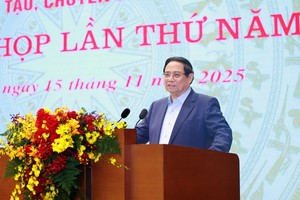
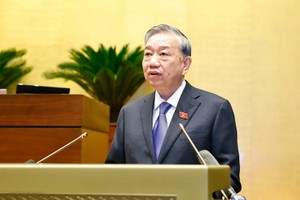
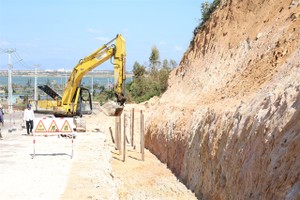






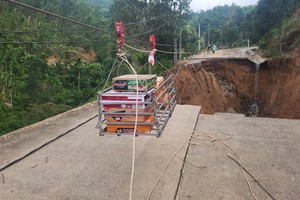
)
